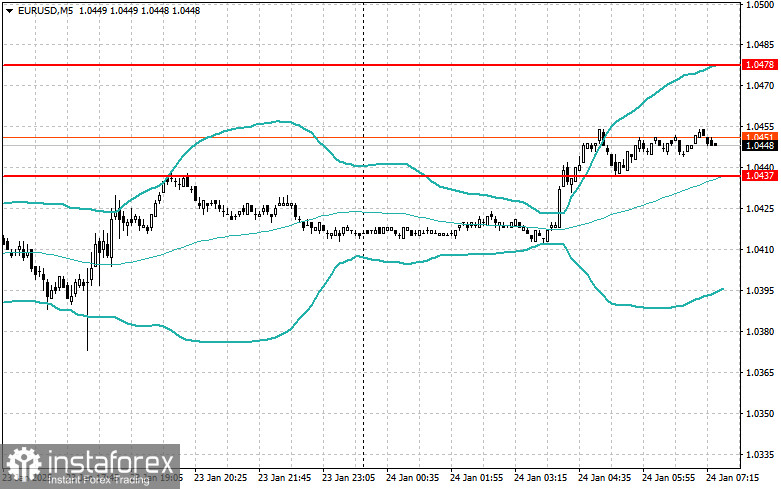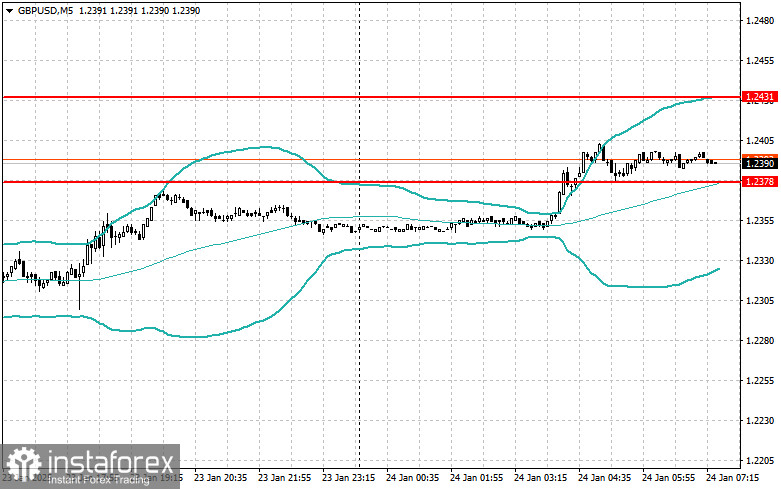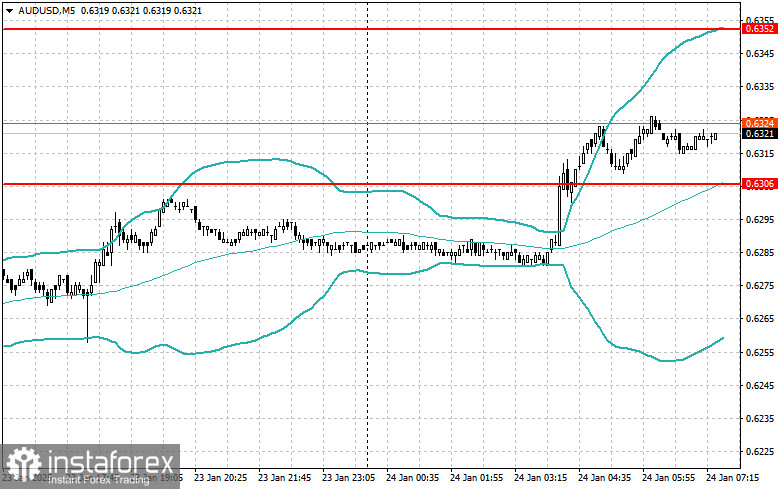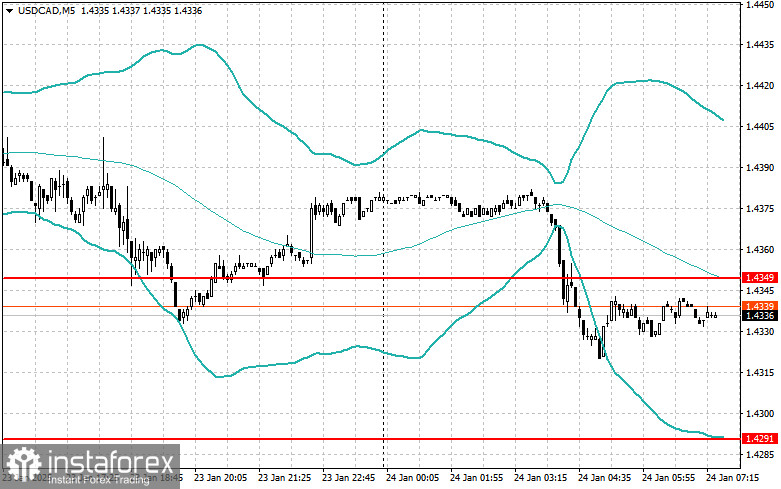The euro and the pound continued to strengthen against the US dollar, primarily influenced by President Trump's speech in Davos.
Trump's remarks on US monetary policy caught traders off guard, prompting them to sell the US dollar amid concerns that the Federal Reserve might adopt the new president's proposals, although this is highly unlikely. Trump expressed his desire to advocate for lower interest rates to promote more stable growth in the US economy. This led to speculation among traders and triggered a sell-off of the dollar, contributing to its decline in international markets.
Today, in the first half of the day, key data will be released, including the Eurozone Manufacturing PMI, Services PMI, and the Composite PMI for January. Since the manufacturing sector continues to strain the Eurozone's economy, further growth of the euro remains uncertain.
European Central Bank President Christine Lagarde's speech later today is expected to be a significant event for financial markets. Given the ongoing economic challenges in Europe, any comments she makes could lead to strong market reactions. However, many experts believe her remarks will likely reiterate points already outlined earlier this week, particularly her focus on inflation expectations and the pressures on monetary policy. With recent inflation data in mind, investors will be closely monitoring any hints of changes in the ECB's strategy.
In the UK, the pound may experience growth in the first half of the day if the UK Manufacturing PMI, Services PMI, and Composite PMI figures exceed expectations. Positive data could strengthen the pound and draw investor interest. However, considering the contraction in the UK's manufacturing sector, this might signal ongoing economic challenges, potentially prompting the Bank of England to implement more aggressive rate cuts, which could weaken the pound.
If the incoming data aligns with economists' expectations, a Mean Reversion Strategy may be the best approach. However, if the figures deviate significantly from forecasts, a Momentum Strategy would be more appropriate.
Momentum Strategy (Breakout)
EUR/USD
- Buy on a breakout above 1.0454 may lead to the euro rising to the area of 1.0496 and 1.0534;
- Sell on a breakout below 1.0414 may lead to the euro falling to the area of 1.0375 and 1.0343;
GBP/USD
- Buy on a breakout above 1.2412 may lead to the pound rising to the area of 1.2449 and 1.2490;
- Sell on a breakout below 1.2370 may lead to the pound falling to the area of 1.2336 and 1.2301;
USD/JPY
- Buy on a breakout above 155.55 may lead to the dollar rising to the area of 155.87 and 156.19;
- Sell on a breakout below 155.19 may lead to dollar sell-offs in the 154.85 and 154.55;
Mean Reversion Strategy

EUR/USD
- Look for sells after a failed breakout above 1.0478, with a return below this level.
- Look for buys after a failed breakout below 1.0437, with a return to this level.

GBP/USD
- Look for sells after a failed breakout above 1.2431, with a return below this level.
- Look for buys after a failed breakout below 1.2378, with a return to this level.

AUD/USD
- Look for sells after a failed breakout above 0.6352, with a return below this level.
- Look for buys after a failed breakout below 0.6306, with a return to this level.

USD/CAD
- Look for sells after a failed breakout above 1.4349, with a return below this level.
- Look for buys after a failed breakout below 1.4291, with a return to this level.





















